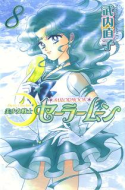 I didn’t think I was interested in reading My Bad! at first, since I typically don’t enjoy BL comedies, but after reading Shinba’s Intriguing Secrets, I changed my mind.
I didn’t think I was interested in reading My Bad! at first, since I typically don’t enjoy BL comedies, but after reading Shinba’s Intriguing Secrets, I changed my mind.
I’m glad I did, because the stories in this collection are quirky and often genuinely funny. “Stamp Please!,” the story of a guy who falls in love with his amiable postman, is a particular favorite.
You can find my review—as part of this month’s BL Bookrack column at Manga Bookshelf—here.
Review copy provided by the publisher.



















Recent Comments